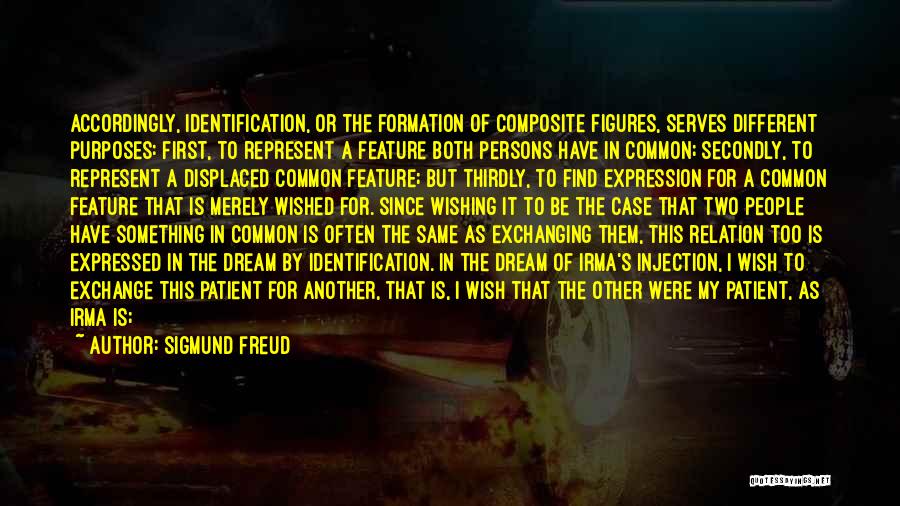Patient Identification Quotes & Sayings
Enjoy reading and share 3 famous quotes about Patient Identification with everyone.
Top Patient Identification Quotes

Accordingly, identification, or the formation of composite figures, serves different purposes: first, to represent a feature both persons have in common; secondly, to represent a displaced common feature; but thirdly, to find expression for a common feature that is merely wished for. Since wishing it to be the case that two people have something in common is often the same as exchanging them, this relation too is expressed in the dream by identification. In the dream of Irma's injection, I wish to exchange this patient for another, that is, I wish that the other were my patient, as Irma is; the dream takes account of the wish in showing me a figure who is called Irma, but who is examined in a posture in which I have only had occasion to see the other. — Sigmund Freud

Nature or Nature's God" is not a statement, but a name, internally divided by tolerated uncertainty. It has the singularity of a proper name, whilst parenthesizing a suspended decision (Pyrrhonian epoche, of which much more in a future post). It designates rigidly, but obscurely, because it points into epistemological darkness - naming a Reality that not only 'has', but epitomizes identity, whilst nevertheless, for 'the sake of argument', eluding categorical identification. Patient in the face (or facelessness) of who or what it is, 'we' emerge from a pact, with one basic term: a preliminary decision is not to be demanded. It thus synthesizes a select language community, fused by the unknown. — Nick Land

He came to believe that, in addition to getting rid of parts of the self, projective identification was sometimes the only way in which some very fragmented patients could communicate. The problem lay in recognising, understanding and making sense of what was being communicated by the patient, in such a way that the patient could better understand what was happening in his internal world. Before any of this can happen, however, the therapist has to be capable of receiving, and holding on to (that is, containing) 'inside of himself what the patient has projected into him. These unprocessed, raw, fragmented, and sometimes 'unthinkable' thoughts and feelings were called by Bion, 'Beta Elements', and the capacity to process and think about them, was referred to as 'Alpha Function'. It follows from this that an increase in Alpha Function will also lead to a greater capacity in the therapist to contain and manage stress. — Ved P. Varma





